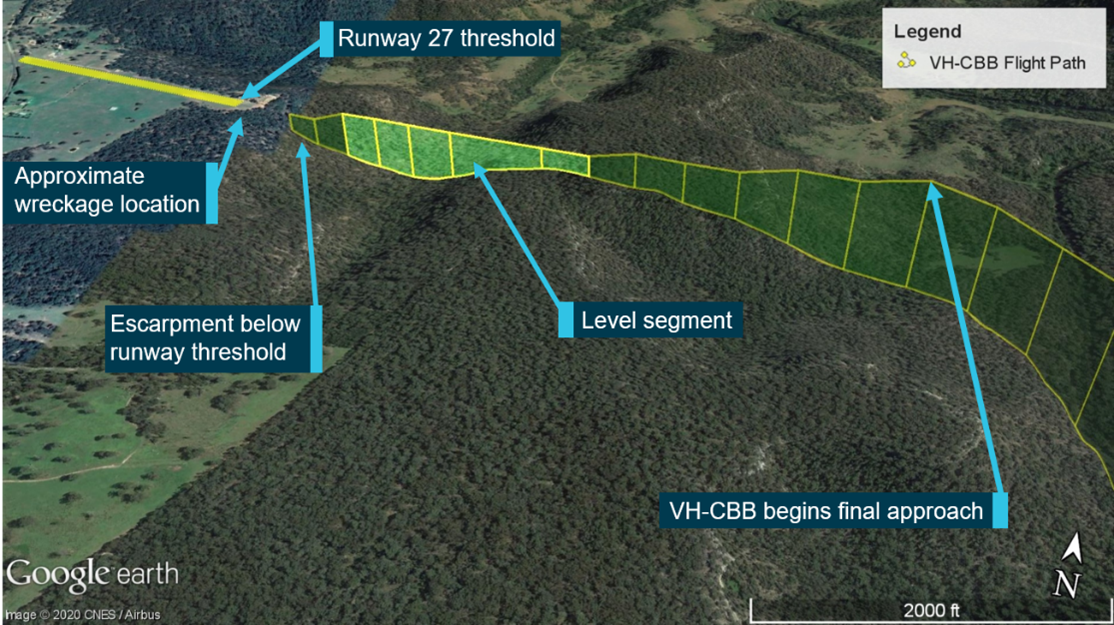
|
Key points:
|
Turbulence during a shallower than intended landing approach resulted in the pilot of a Cessna 172 aircraft electing to reduce power and land in a tree canopy about 50 metres short of the runway threshold, an ATSB report says.
On 22 March 2020, a Cessna 172 aircraft, registered VH-CCB, took-off for a local private flight from a private airfield at Canyonleigh, near Mittagong, in New South Wales, with the pilot and passenger on board. Soon after take-off the aircraft experienced turbulence and the pilot and passenger decided to terminate the flight. The aircraft turned for its final approach about 1 NM from the runway threshold and 400 ft above aerodrome level. As it approached the runway over steep forested terrain, the pilot reported the approach profile was lower than intended and increased power. The aircraft then pitched-up on encountering turbulence.
After correcting the pitch attitude, the pilot saw the aircraft remained lower than expected and was not aligned with the runway. Uncertain whether the aircraft would be able to climb over the canopy to the runway the pilot reduced power and landed in the tree canopy. The aircraft came to a rest 50 metres short of the threshold and to the left of the runway. The pilot and passenger sustained serious injuries and the aircraft was substantially damaged.
The ATSB’s safety message featured in the report highlights the importance of adopting an approach profile that mitigates the effects of gusty or turbulent conditions. Also, pilots need to be go-around prepared and minded and go around if the approach becomes unstable.
For more information on for go-around preparedness read the Flight Safety Foundation Approach-and-landing Accident Reduction briefing note 6.1 from the Approach-and-landing Accident Reduction (ALAR) Tool Kit.
Read the report: Collision with terrain involving Cessna 172, VH-CBB, 31 km west of Mittagong, New South Wales, on 22 March 2020


